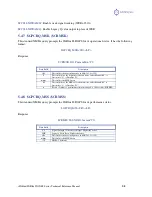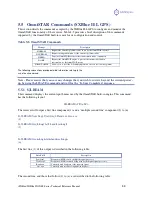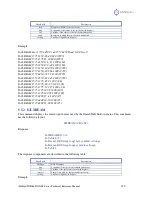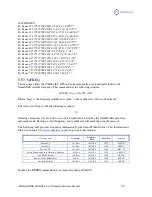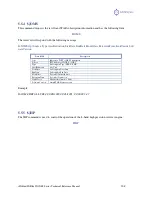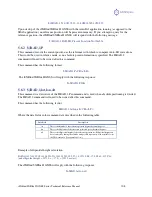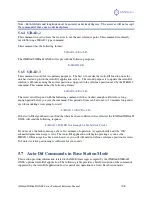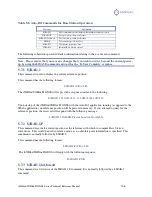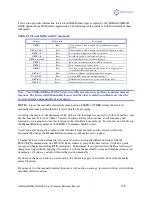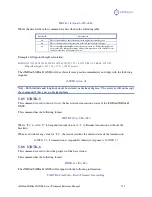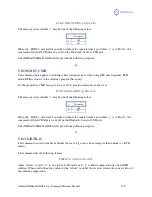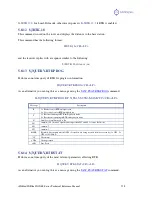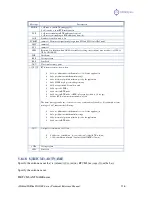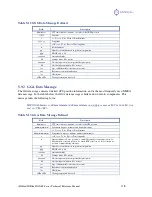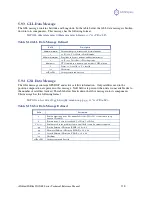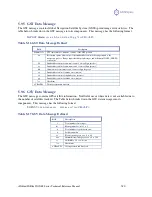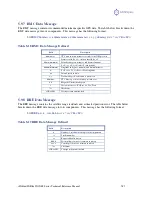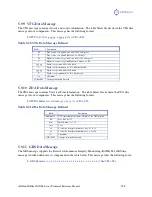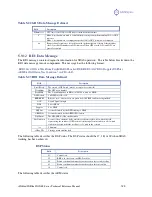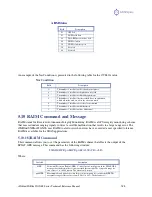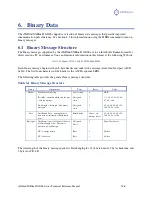
iSXblue/SXBlue II GNSS Series Technical Reference Manual
111
$JRTK,1,lat,lon,alt<CR><LF>
Where the data fields in this command are described in the following table.
Data Field
Description
lat
This is the latitude of the reference point in degrees decimal degrees.
lon
This is the longitude of the reference point in degrees decimal degrees.
alt
This is the ellipsoidal height of the reference point in m. (Ellipsoidal height can
be calculated by adding the altitude and geoidal separation, both available from
the GGA sentence. See example below.)
Example of ellipsoidal height calculation:
$GPGGA,173309.00,5101.04028,N,11402.38289,W,2,07,1.4,1071.0,M,-17.8,M,6.0, 0122*48
Ellipsoidal height = 1071.0 + (-17.8) = 1053.2 meters
The iSXBlue/SXBlue II GNSS will use this reference position immediately and reply with the following
response:
$>JRTK,lat,lon,alt
Note - Both latitude and longitude must be entered as decimal degrees. The receiver will not accept
the command if there are no decimal places.
5.8.5
$JRTK,5
This command is used to show or to set the base station transmission status of the iSXBlue/SXBlue II
GNSS.
This command has the following format:
$JRTK,5[,Tx]<CR><LF>
Where “Tx” is set to “0” to Suspend transmission or to “1” to Resume transmission (without the
brackets).
When used without any value for “Tx”, the receiver returns the current status of the transmission:
$>JRTK,5,0
if transmission is suspended, otherwise response is
$>JRTK,5,1
5.8.6
$JRTK,6
This command is used to show the progress of the base station.
This command has the following format:
$JRTK,6<CR><LF>
The iSXBlue/SXBlue II GNSS will respond with the following information:
$>JRTK,6,TimeToGo, ReadyTransmit,Transmitting


